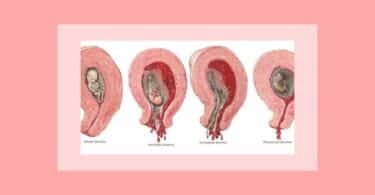Jane, a 36 year old client, wants to get pregnant. She has not had a menstrual period for 18 months. That was when she stopped the oral contraceptives that she took for 15 years. For the last 3 years of it, she was taking Seasonale, an extended-cycle pill with menses once every 12 weeks. She feels frustrated and upset about her missing period, like a failure as a woman, has fears that her husband will leave her if she cannot have children. Her basal body temperature and cervical mucous do not indicate that she is ovulating, and she never gets a positive indicator of ovulation from the urine test strips she purchased. She has been evaluated by a fertility clinic with a finding of ovarian insufficiency. She cries about it often at night.
She reports that she also had no menstrual cycle for about 8 months in her teens when she was anorexic, and her body weight was under 100 lbs (5’8” normal frame). Her father had left the family when Jane was 15, and she felt everything was crazy at that time. The only thing she felt she could control was her eating, so she began to micro-manage her food. After several months, she had lost about a third of her body weight. She got mononucleosis and was in bed for several weeks. Her mother eventually got her into an eating disorder counseling program which helped. Within six months, she was back to normal eating and weight, and her menstrual cycle had resumed.
She was in a car accident a year and a half ago, with minor whiplash and a concussion. She had bad headaches daily for about 2 months after that: bruised ache feeling on the vertex, behind the eyes, and down the left temple where her head hit the window. The pain was worse from moving around, better from lying down. She had several sessions of craniosacral therapy and the headaches stopped for the most part. She still gets them once or twice a month, especially if she has not gotten enough sleep, same type of pain, and they last for several hours. She is having sharp needle like pain in her left shoulder joint when she raises her arm laterally, diagnostic evaluation indicates a bone spur. She has had problems with that shoulder in the past, with easy dislocations. She used to play sports, but had to stop after a very painful episode where her shoulder “popped out of joint” during a competition.
She fears flying and cockroaches in an extreme way – she does not travel in planes ever. She does not like direct sun on her face, because her eyes are very sensitive to light and they water a lot. She must have an open window at night to sleep, or she feels restless in bed. She had never been a deep sleeper. She has a recurrent dream of being in a rowboat on an ocean, looking over and seeing a big wave coming, and feeling fearful that it will overturn her boat. She always awakens before the wave hits the little boat.
She works long hours for a resort hotel as an event planner. Her average over the past 2 years was 65 hours/week. A little over a year ago, her job territory changed to include some parts of Asia. Since then her work hours are erratic, sometimes starting at 5 am, other times working until 2 am. She generally does not work more than 10 hours in a day, but her work covers all 24 clock hours on any given week. She often has at least one night per week with 4 hours of sleep. She enjoys her job, and feels a sense of satisfaction about what she does and the income she earns. She agrees it is stressful.
Her family history shows diabetes on her father’s side of the family. Both of her mother’s parents died of cancer in their 70s (lung, bowel).
After discussing symptoms and reviewing the lab reports she had brought in with her, I reflected on how I might best assist this woman. My approach now is quite different than it would have been early in my practice. This was a case that called for the wisdom of Eizayaga.
Eizayaga: Remarkable proponent of homeopathy
Francisco Eizayaga, Argentine physician and homeopath who began practicing in Buenos Aires in 1952, was a dynamic leader in the homeopathic profession. As a professor at the Asociacion Medica Homeopatica Argentina, he taught generations of homeopaths. As the founder of the Instituto Superior de Homeopatia Clinica de la Fundacion HOMEOS in Buenos Aires, he furthered the boundaries of homeopathic research while providing clinical training and serving diverse populations with much needed medical care. He served in leadership capacities with the Liga Medicorum Homeopathica Internationalis and the Argentine Medical Homeopathic Association (and many others), and provided the first Spanish version of Kent’s Repertory. He taught hundreds of seminars around the world. He passed away in 2001, and his homeopathic legacy continues through three of his children who became homeopaths.
During an era when homeopathy was at low ebb in the US, Eizayaga came to teach small groups of enthusiastic students here, beginning in the 1980s. One of my first homeopathic teachers, Lynn Amara, CCH, worked closely with him, documenting his therapeutic algorithms. She introduced all of her students to his analytical style in our classes. In 1993, I met Eizayaga when I attended a weekend seminar that he gave at Bastyr University. His case based focus and way of discussing disease was fascinating to me. Now with 20 years of clinical practice, I appreciate more than ever the way that Eizayaga has been profoundly influential in my understanding of case analysis.
Case Analysis: Not for the casual observer
Homeopaths follow Hahnemann’s direction in conducting a thorough interview, attempting to identify what is striking or characteristic about the client’s presentation, and then matching that to a remedy pattern. There is generally an expectation that the symptoms make up one whole cloth of the case, and that yields one constitutional remedy to address every symptom reported in the client’s state. This is a great theory, and currently holds the moral high ground in general understanding of clinical practice. Sometimes remarkable, life-changing results on every level come from this approach. Sometimes the client feels better in herself, but has no change in her chief physical complaint (or vice versa). Sometimes little or nothing happens, and then the practitioner’s conclusion is usually that the case was not correctly perceived and the remedy selection was inaccurate. Using this approach for the type of case noted at the beginning of this article has not been consistently successful for my clients. Based on my understanding of Eizayaga’s work, I conclude that he would have a different view of both the analytical process and the presumed cause in the unsuccessful outcome.
Eizayaga’s approach was more nuanced; he took into consideration the evolutionary states of disease. He taught that their varying stages of seriousness required different therapeutic criteria. He saw a difference between therapeutics for the affective state of the client and the symptoms of disease, between infectious disease and organic disease. He did not intermingle the symptoms of the client prior to the physical disease manifestation with those symptoms of the disease itself which appeared later. This allowed for the similia to be determined in several ways. He identified four primary aspects of each case, and each of these could present a therapeutic option. The following diagram illustrates his concepts.
NOTE: Eizayaga used the term ‘Constitutional’ to describe the physiology/genotype and the term ‘Fundamental’ to describe the overall state of the client within himself. In current parlance the overall state of the client is understood to be ‘Constitutional’, so in an effort to avoid the confusion that often arises for students encountering these terms, and with apologies to Dr. Eizayaga, I have transposed these two terms for the purpose of this diagram and discussion.
In this diagram, the four central boxes show Eizayaga’s concepts.
Fundamental: this represents the physiology such as the client’s ‘phosphoric’ long limbed appearance, or ‘flouric’ easy dislocations due to laxity of the ligaments. Eizayaga identified four genotypes: sulphuric, carbonic, phosphoric and flouric. He taught that this aspect of the case was important to prevent further disease through strengthening the organism.
Constitutional: this represents the disturbances of sensation, function, affect and experience of life that describe the client’s adaptation in life, and any change from ‘normal’, This is what we generally consider to be the constitutional remedy. However, Eizayaga only considered symptoms that affected the client generally, at the level of emotional affect, mental function, sensation and function in remedy selection.
Lesional: this represents the local organic tissue change in the end products of the disease process due to structural and microchemical changes in the cells. Examples include a nasal polyp, a bone spur, a calcified nodule in the breast, a dental abscess. He taught that this aspect of the case was addressed as a disease artifact. By that time the vital force has initiated a disturbance that has passed through the stages of disrupted sensation and function, into organic tissue change. By the time the organism has altered tissue, Eizayaga taught that therapeutics specifically addressing the lesional pathology were best defined by selecting only those symptoms of the local disease manifestation, or general symptoms that had altered since the appearnce of the lesional organic disease. These therapeutics were based on similia with the disease process, rather than the client totality. Eizayga excluded symptoms that were associated with the “patient who suffers from the illness”.
Miasmatic: this represents the inherited or acquired terrain of the client with predisposition to specific patterns of disease (psora, sycosis, syphilitic, tubercular, cancer miasms). Eizayaga taught that this aspect of the case could be addressed by nosodes or remedies with strong miasmatic affinity.
Eizayaga strongly advised that the initial engagement with the client must address the organic (lesional) disease. The remedy selection for the lesional disease may agree with the constitutional or fundamental symptom pictures, but if there is not similarity, Eizayaga directed the practitioner to begin the case with the similia for the lesional aspect. Once the case has begun in this way, the dialogue of the vital force will bring about changes in symptoms that direct the further remedy selections. He taught that after the lesional disease burden has been lifted from the body, the vital force is more able to engage other aspects.
As I began to work with this approach, the clinical results my clients experienced improved substantially. While the aspects Eizayaga defined were clearly identifiable in my clients, and helpful to consider, they did not cover all of the circumstances presented by my clients: the woman with no menstrual period in the three years since a contraceptive depo-provera injection, the child unwell since a DPT vaccination, the Nevada client with very high uranium levels, the triathlete who had disrupted his kidneys when he became severely dehydrated in a competition held in a remote desert location. Eventually, I added the three exterior boxes to Eizayaga’s initial four, to include the voices of a weakened organ, the sequelae of medical therapeutics, and the effects of body burden and lifestyle impacts in the case.
Deconstructing the Client Report
For our example client, Jane, we can look at her case as all one cloth, and attempt to choose a remedy that covers all of it. This is what I would have done in my early years of practice. Eizayaga’s approach directs me to consider it differently, looking at the various aspects:
| Fundamental | The bone spur with needle like pain on motion, and easy dislocation of left shoulder suggest flouric constitution |
| Constitutional | Her fears, recurrent dream, desire for open air and disturbances of sensorium such as the light sensitivity / lachrymation are current indicators of her state. Her past eating disorder as a coping strategy in the ‘out of control’ time after her father left the family is characteristic. |
| Miasmatic | The family history of cancer and diabetes, along with her personal history of mono indicate a cancer terrain in the case |
| Lesional | Her hormonal function is disrupted; she had a concussion/head injury about a year and a half ago, and menses stopped 18 months ago. Sequelae of head injury can include symptoms that mimic pituitary tumor, such as amenorrhea, even when there are no physical findings of pituitary abnormality.
She is still having headaches with the same nature of pain as after she had the concussion – more seldom but still there. |
| Iatrogenic | Her menses stopped after she stopped taking oral contraceptives. Unclear if this is related to the rx or the head injury since they both happened about the same time. |
| Organ | Ovarian insufficiency can arise as a sequelae of anorexia. She may or may not have been ovulating while she was on oral contraceptives – unclear because she did not test it in the past. |
| Environmental | Her work schedule disrupts normal sleep (maintaining cause?) |
Eizayaga advises engaging with the lesional aspect of the case first. In this case, the etiology of her menstrual cessation was unclear (medications? head injury?). However, she is still having headaches since her concussion. Based on this, I chose to give Jane a 1M dose of Arnica. Three days later, she called to report that she experienced a typical headache the next day for about 30 minutes, then started her menstrual period the next day after that.
This strategy of deconstructing the symptoms into aspects of the case, allowing for the opportunity to identify a similia for each aspect rather than looking at all the symptoms together, brings forward therapeutic options that would not have been considered when I was looking for one constitutional remedy to address the state of the client. Once a remedy has been given, careful attention is paid to the change in symptom pattern when the client returns for a follow up. The dialogue of the vital force through the symptom changes indicates the next step at each consult. Eventually the client ends up with a deep constitutional remedy. It has been interesting to me how many times I have worked with a client in this way, and eventually been led by the symptoms to give a remedy that I had tried as a constitutional remedy at the beginning (while there was still a variety of lesional disease) with no result, only to see that it acts deeply when given later in the process of healing.
Listening for the Voice of the Client
Over time, I have come to listen to clients with the nuanced ear of Eizayaga, hearing the dominant voice of any of these aspects in each consult. As I sit across from a client, I consider the case taking to be an event similar to a dinner party. At the table, each aspect of the case has a voice. While several of the voices may make an entrance into any given consult, it is notable when one voice comes strongly forward. For example, over a series of consults, our example client, Jane, may focus strongly on one specific aspect in her symptom report. She may describe the miasmatic pattern in one consult, as if the vital force is calling for the related nosode or a remedy with a strong miasmatic affinity. She might speak through the voice of a constrained organ or body system. She could come in and describe her experiential dilemma in her way of dealing with life that would call for a constitutional remedy choice.
My experience of working with Eizayaga’s strategies has shown me that there is benefit in assessing the case by looking at each aspect, and that addressing the lesional aspect of the case often opens the door to healing more reliably than working continually with a constitutional remedy choice. Certainly a deep constitutional remedy is the goal so that the client experiences greater health overall. This approach gives me a steady path to get there.
More information about Dr Eizayaga’s concepts and strategies can be gleaned from his book, Treatise on Homeopathic Medicine.







Thanks to dr Allen for this article. I remain a litle bit disapointed because I was expecting a further and/or deeper introduction to Eisayaga’s method.
I’ll study Eisayaga.
Thank you -very clearly presented
best article.article has picture of white coat with stethoscope, if one gets up bp systolic esp checked from a white coat doctor,half an hour later get your bp checked from your street simple uniformed doctor ,there will be a difference of min 10 points,10 point credit goes to white coat and his neck stethoscope,homeopathy is sensitive science and this type of artificial essential hypertension is better undertood by naja and a cooler of fluttering heart valves.